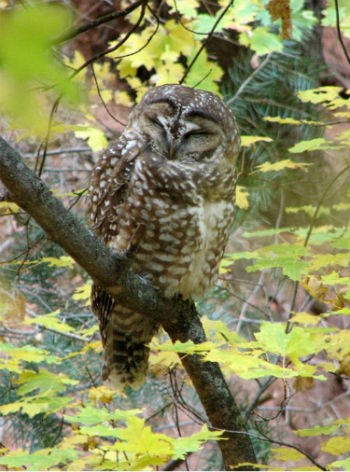
NPS photo Strix occidentalis lucida
Mexican spotted owls have been listed as federally threatened since 1993 due to deforestation and habitat degradation. Today, the primary threat to Mexican spotted owl population in the U.S. is loss of habitat from stand-replacing wildland fire. However, this skillful hunter has found sanctuary among Zion's canyons. The Mexican spotted owl's range stretches across the Four Corners region of Utah, Colorado, New Mexico and Arizona. Its preferred habitat is cool, moist, old-growth forests. So where can this owl find refuge in Zion? Within the dry desert of Zion lies an unexpected oasis. Deep, narrow slot canyons that have been carved into the sandstone by floods create secret hiding places for these birds. The tall walls of these canyons allow very little sunlight in, keeping them cool like air-conditioned homes. These temperate canyons are green and lush and support a variety of life, including tall trees and rodents. Monogamous owl pairs nest and roost in the cavities of cliffs and tall trees, such as Douglas fir, white fir, and maple. They perch in trees and on rock ledges waiting until nightfall to silently swoop down on their prey, typically desert woodrats (Neotoma lepida) and occasionally darkling beetles (in the family Tenebrionidae). 
NPS photo/Sarah Stio The Mexican spotted owl population has been monitored in Zion since 1993 and has remained stable throughout that time. The park monitors 15 nesting sites; however, there are more within the park. Mating occurs from late February to early March. There are two to three eggs per clutch, with about a 40% juvenile success rate. Juveniles can be seen fledging from their nests in early August.
|
Last updated: March 24, 2025
